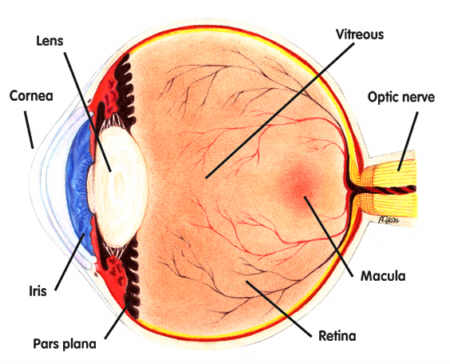Answering your most frequently asked questions about DLS.
It is no secret that the workings of the inner eye are complicated and remarkable. The amount of small, intricate muscles and parts working together to create the images that we see in front of us each and every day is nothing short of amazing.
One of the best ways that many ophthalmologists have found to explain the complex inner workings of the eye to their patients is to compare them to the multipart inside pieces of a camera. For instance, the front surface of the eye, called the cornea, is like the clear window that you look through on a classic camera in order to line your shots into place and view the scene in front of you. All sight happens through this window.
Behind the cornea, things become a little more complex. Directly behind the cornea is the colored part of our eye, also known as the iris. Our iris acts as a diaphragm in a camera, which opens and closes in order to correctly adjust the amount of light that is entering the eye by changing the size of the pupil.
The next important piece of the inner eye’s puzzle is the lens, which is located behind the pupil. When we are in our early years of life, the lens is clear and it is easily able to adjust its shape in order to focus light onto the back of the eye―the retina. Our retina is the part of our eye which acts like the film in a camera, taking the image we see outside and relaying it clearly to our brains.
However, just as with a camera or any other piece of detailed equipment, when one part of our eye begins to become non-operative, it can throw the entire rest of the process off as well. Such is the case with Dysfunctional Lens Syndrome (DLS).
DLS often accompanies the many common changes in vision that occur as we get older. For instance, aging is known to affect our eye’s lens, typically causing it to stiffen and lost its ability to change shape and focus. What was once a clear, adjustable piece of our eye’s puzzle when we were young can suddenly cause our eye’s to lose their focus. This is called presbyopia.
Unfortunately, over the years this problems will continue to grow, making focusing and sight much more difficult. Our eye’s lens will typically lose its clarity and clearness, leading to the formation of cataracts. These too will only to get more and more cloudy and dangerous as we age, sometimes even causing a complete loss in vision.
Luckily, there are several ways to treat Dysfunctional Lens Syndrome, depending on what the patient wants. For instance, early on reading classes or bifocals may be prescribed. Bifocal contacts lenses and monovision contacts can even be prescribed for those who do not want to wear glasses.
However, Refractive Lens Exchange is one of the best, most effective surgeries for people who do not want to deal with the hassles of prescription lenses. RLE removes the dysfunctional natural lens inside of the eye and replaces it with a multifocal artificial lens (IOL) that can focus on light, both near and far. If cataracts have already become visually significant as a part of DLS, they may first need to be removed with surgery before improving ones vision.
Dysfunctional Lens Syndrome can serious affect a patient’s life is not taken care of right away. Be sure to schedule comprehensive eye examinations with your ophthalmologist to ensure that you are catching any vision problems early and will not have to deal with the repercussions of poor vision later in life.
Information Source: Harvey Carter, MD.
